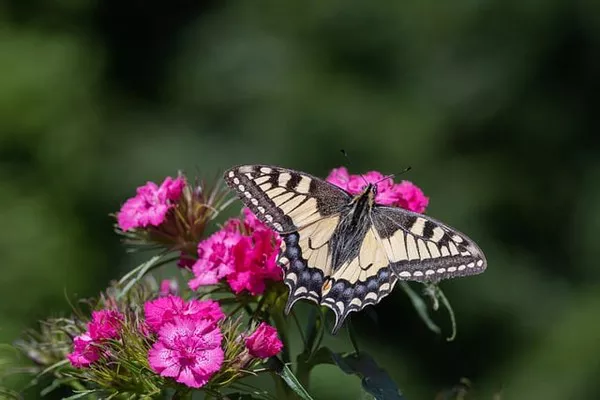Monarch butterflies (Danaus plexippus) are among the most captivating and iconic insects in the world, renowned for their incredible long-distance migrations and striking orange and black wing patterns. But what fuels these remarkable journeys and sustains the monarch population throughout their life cycle? The answer lies in their dietary preferences, particularly their reliance on specific flowers for nectar. In this article, we will delve into the fascinating world of monarch butterfly feeding habits, exploring the types of flowers they prefer and the critical role these flowers play in supporting the monarch population.
Monarch Butterfly Lifecycle
Before we dive into the specifics of monarch butterfly feeding, it’s essential to understand their unique lifecycle. Monarchs undergo a complete metamorphosis, progressing through four distinct stages: egg, larva (caterpillar), pupa (chrysalis), and adult butterfly. This article primarily focuses on the adult stage when butterflies feed on nectar from flowers.
The Role of Nectar in the Monarch Butterfly’s Diet
Nectar is the primary food source for adult monarch butterflies. While monarch caterpillars feed exclusively on milkweed plants (Asclepias spp.), adult monarchs have a more diverse palate, sipping nectar from various flowers. Nectar serves as a crucial energy source for these butterflies, enabling them to engage in essential activities like mating, flying, and migrating.
Preferred Flowers of Monarch Butterflies
Monarch butterflies are not overly selective when it comes to nectar sources, but they do exhibit preferences for certain types of flowers. Their choice of flowers may be influenced by factors such as flower color, scent, and nectar accessibility. Some of the preferred flowers of monarch butterflies include:
Milkweed (Asclepias spp.): Milkweed is not only the primary host plant for monarch caterpillars but also a favorite nectar source for adult monarchs. These plants are crucial for monarch survival as they provide both food and habitat.
Butterfly Bush (Buddleja spp.): As the name suggests, butterfly bushes are well-known for attracting various butterfly species, including monarchs. Their colorful, fragrant blooms are rich in nectar, making them an excellent food source.
Zinnia (Zinnia spp.): Zinnias are annual flowering plants that produce vibrant and eye-catching blooms. Their bright colors and ample nectar make them a popular choice for monarch butterflies.
Purple Coneflower (Echinacea purpurea): Monarchs are attracted to the distinctive daisy-like flowers of the purple coneflower. These perennials provide nectar and add a splash of color to gardens.
Asters (Aster spp.): Asters are late-season bloomers that supply monarchs with nectar when other flowers are scarce. Their star-shaped flowers are particularly appealing to butterflies.
Liatris (Liatris spp.): Liatris, also known as blazing star or gayfeather, is a tall perennial plant that produces spiky clusters of purple, pink, or white flowers. Monarchs are drawn to these distinctive blooms.
Verbena (Verbena spp.): Verbena is a popular annual or perennial flower that comes in various colors. Its nectar-rich blooms attract a wide range of pollinators, including monarch butterflies.
Marigold (Tagetes spp.): These cheerful, aromatic flowers are not only garden favorites but also a source of nectar for monarchs.
Phlox (Phlox spp.): Phlox species, known for their clusters of small, colorful flowers, are another option for monarchs seeking nectar.
Sunflowers (Helianthus spp.): While sunflowers are more commonly associated with bees, they also provide nectar for monarch butterflies. The large, sturdy blooms are easy for butterflies to land on.
Conservation Implications
The preference of monarch butterflies for specific flowers has important conservation implications. To support monarch populations and their incredible migrations, it is crucial to promote the planting of these nectar-rich flowers. Creating butterfly-friendly gardens and maintaining milkweed plants can make a substantial difference in providing essential resources for monarchs. Additionally, avoiding the use of pesticides in these areas is essential, as it can harm not only monarchs but also other pollinators.
Conclusion
Monarch butterflies are a natural wonder, captivating people worldwide with their annual migrations and stunning beauty. While their lifecycle revolves around milkweed, adult monarchs have a broader range of nectar-rich flowers to choose from. These flowers provide the energy needed for vital activities such as mating, flying, and migrating.
Understanding the preferred flowers of monarch butterflies is essential for their conservation. By planting and maintaining these nectar sources in our gardens and natural areas, we can contribute to the survival of this remarkable species. Monarch butterflies are not only a symbol of beauty but also a symbol of resilience, and it is our responsibility to ensure their continued presence in our ecosystems.


